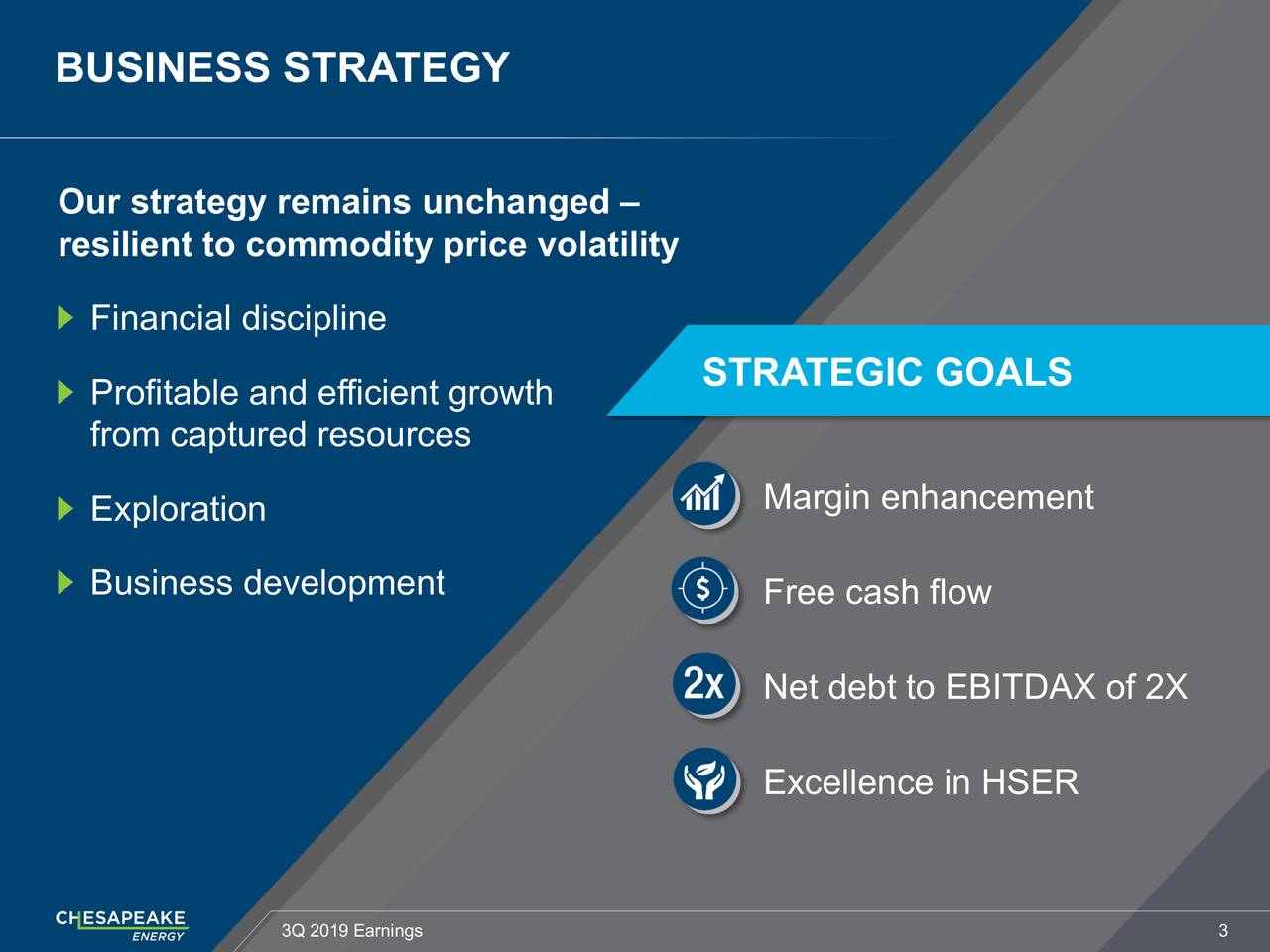Chesapeake (NYSE: CHK) stock price tumbled below $1 after posting bigger than expected loss for the third quarter. In addition, the company has also issued a warning that they might not be able to continue if oil and gas prices persist at the current level.
Chesapeake stock price is currently trading around $0.90. The shares plunged more than 29% in a single day. The shares are down 50% in the past six months. The company has also been struggling to generate enough cash for business operations, capital investments, and debt repayments.
Q3 Loss Impacted Chesapeake Stock Price
Chesapeake Energy has reported a significant decline in third-quarter revenue. The company has also experienced a drop in Q3 production to 478K boe/day. This represents a decline of 11% Y/Y.
CHK’s realized oil prices stood around $60.66/bbl in Q3, while natural gas prices fell to $2.38/Mcf. Consequently, its revenue plunged more than 3% from the previous year’s quarter.
On top, the company’s adjusted net loss came in at $188 million, or $0.11 per share. The company has been struggling with a massive amount of debt load. Chesapeake’s debt outstanding inclusive of Brazos Valley stands around $9.732 billion at present. Unfortunately, it is not in a position to generate enough cash to repay the debt.
Going Concern Warning Added to Bearish Trend
Chesapeake Energy indicated that they might not be able to continue as a going concern if oil and gas prices persist at the current level.
CHK warns “If continued depressed prices persist, combined with the scheduled reductions in the leverage ratio covenant, our ability to comply with the leverage ratio covenant during the next 12 months will be adversely affected which raises substantial doubt about our ability to continue as a going concern.”

The company is planning to significantly reduce its cost structure and capital investments to improve its cash position. Overall, future fundamentals are looking bleak for Chesapeake stock price. This is because oil and gas prices have limited upside potential considering demand and supply dynamics.
Trusted & Regulated Stock & CFD Brokers
What we like
- 0% Fees on Stocks
- 5000+ Stocks, ETFs and other Markets
- Accepts Paypal Deposits
Min Deposit
$200
Charge per Trade
Zero Commission on real stocks
64 traders signed up today
Visit Now67% of retail investor accounts lose money when trading CFDs with this provider. You should consider whether you can afford to take the high risk of losing your money.
Available Assets
- Total Number of Stocks & Shares5000+
- US Stocks
- German Stocks
- UK Stocks
- European
- ETF Stocks
- IPO
- Funds
- Bonds
- Options
- Futures
- CFDs
- Crypto
Charge per Trade
- FTSE 100 Zero Commission
- NASDAQ Zero Commission
- DAX Zero Commission
- Facebook Zero Commission
- Alphabet Zero Commission
- Tesla Zero Commission
- Apple Zero Commission
- Microsoft Zero Commission
Deposit Method
- Wire Transfer
- Credit Cards
- Bank Account
- Paypall
- Skrill
- Neteller
What we like
- Sign up today and get $5 free
- Fractals Available
- Paypal Available
Min Deposit
$0
Charge per Trade
$1 to $9 PCM
Visit Now
Investing in financial markets carries risk, you have the potential to lose your total investment.
Available Assets
- Total Number of Shares999
- US Stocks
- German Stocks
- UK Stocks
- European Stocks
- EFTs
- IPOs
- Funds
- Bonds
- Options
- Futures
- CFDs
- Crypto
Charge per Trade
- FTSE 100 $1 - $9 per month
- NASDAQ $1 - $9 per month
- DAX $1 - $9 per month
- Facebook $1 - $9 per month
- Alphabet $1 - $9 per month
- Telsa $1 - $9 per month
- Apple $1 - $9 per month
- Microsoft $1 - $9 per month
Deposit Method
- Wire Transfer
- Credit Cards
- Bank Account




